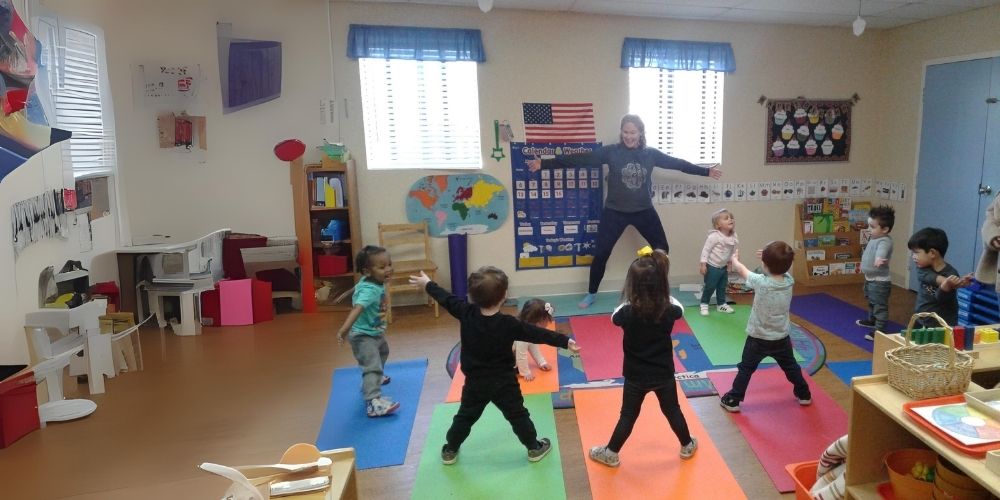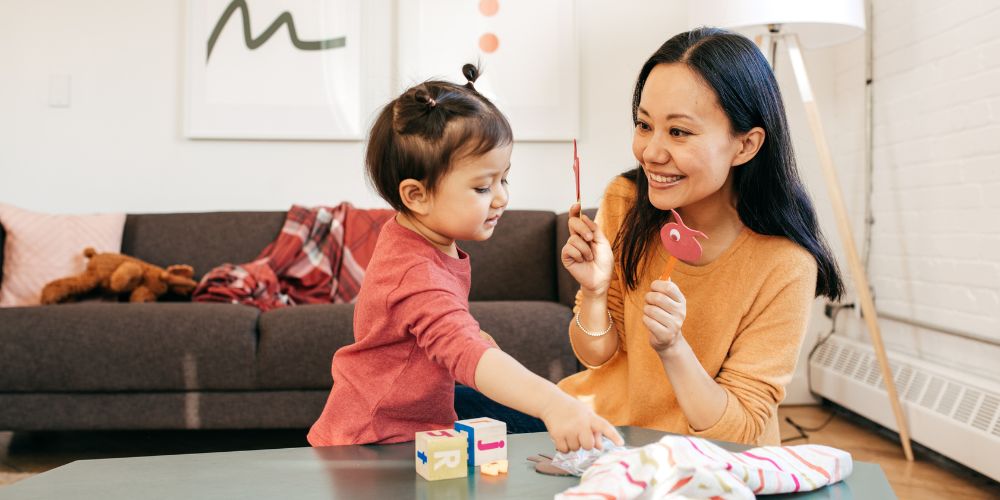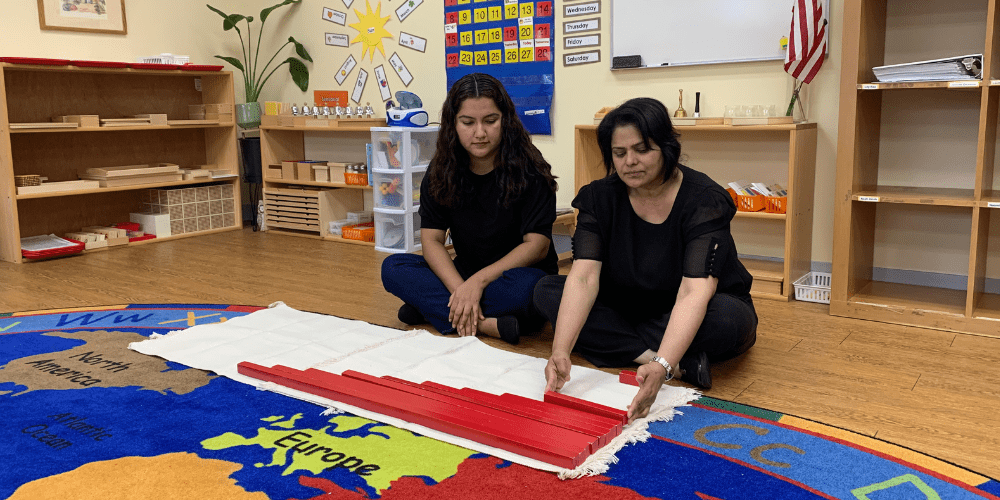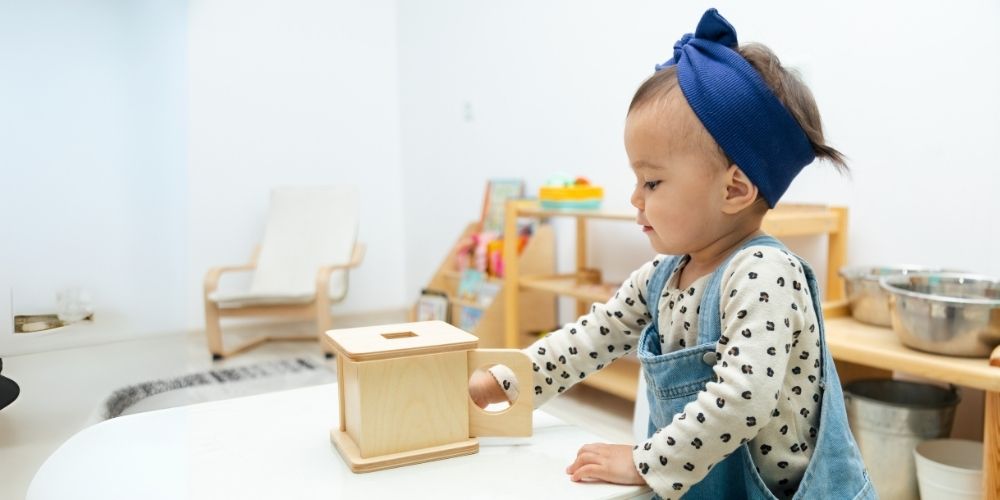The best time to teach your child a second language is the same time they’re learning their first or primary language. Contrary to popular belief, learning a second language while they are focused on learning their primary language does not cause confusion, delays, or process overload. In fact, it is between the ages of 0-3 that the brains of young children are the most flexible and suited to language learning, especially when the introduction of the second language occurs in an intentional and consistent way. This is why we teach a second language beginning in preschool.
Maria Montessori coined the phrase “the absorbent mind” to refer to the capacity of a child’s mind to absorb information from their environment and shape their brains unconsciously. Acquisition of language in a child is a manifestation of this. According to the Montessori Philosophy, the absorbent mind (most active between ages 0-6 years) allows the young child to experience periods of intense mental activity,” absorbing” learning from her environment naturally and spontaneously. This coincides with a child’s sensitive period for language, which are periods during human development when children are biologically ready and receptive to acquiring a specific skill or ability. You may have seen this in a young child whose vocabulary seems to explode seemingly overnight as they suddenly begin using numerous new words.
Long Term Benefits of Early Language Development
There are many benefits to learning a second language. According to Lead with Languages and numerous studies, learning a second language from a young age can create long-term benefits such as improvements in cognitive development, enhancements in creativity, and increases in mental flexibility. Bilingual children have improved reading, writing, and math skills, and they generally score higher on standardized tests. Additionally, learning a second language helps children develop cultural awareness and appreciation, a critical skill in today’s globalized world.
If you are looking for specific research studies on the benefits of language learning, we recommend checking out ACTFL Language Connects.
How Second Language is Taught at CMMS
At Children’s Manor & Magnet Montessori Schools, our children are introduced to a second language at an early age in which they are taught the rudiments of Spanish vocabulary and grammar in the context of the culture where the language is spoken. The experience of learning a language and culture simultaneously enhances the child’s linguistic comprehension and introduces them to a diversity of cultures.
We also incorporate music and movement into our language instruction. Children are introduced to songs in a foreign language in which they are asked to act out verbs like jump, run, dance, sit, and stand. Often these songs are ones children are already familiar with in English, such as ‘Head, Shoulders, Knees, and Toes!” The more movement incorporated into language lessons, the more likely students will understand, remember, and apply their new vocabulary. You may even have your children coming home and practicing their Spanish by singing a song they learned in school. You will be amazed at how quickly they pick up on the new language!
Foreign language is also an integral part of our Montessori Links curriculum. For each month in the academic year, the Montessori Links curriculum presents a Theme and a Continent Study that incorporates the five Montessori learning areas. As the Themes and Continent studies integrate study of different countries and cultures (including their food, clothing, housing, holidays, musicians, artists, authors, etc), children are further exposed to foreign language within the context of everyday life.
The most spoken languages in the world are English, Mandarin, Hindi, Spanish and French. Spanish is the most spoken language in the United States other than English, with more than 37.6 million people over 5-years-old speaking Spanish at home. Spanish is also the most commonly taught second language in high schools across the US.
Tips to Support Your Child with a Second Language at home from Cornell Linguistic Researchers
- Surround the child with more than one language through conversations and social groups using different languages; the earlier the better.
- Maintain home (heritage) language when a second language is being learned outside the home.
- Expose children to multilingual settings and give them plenty of opportunities to play with children who speak the second language.
- Provide fun and interactive language-learning environments (e.g., music, dance and film) in both languages, and often with children of similar age.
- Promote reading and storytelling in multiple languages.
- Maintain a positive attitude toward different languages and cultures.
Interested in learning more about our Montessori Links Curriculum and integration of a second language? Schedule a tour with us!





